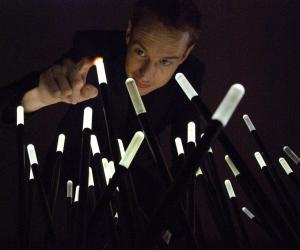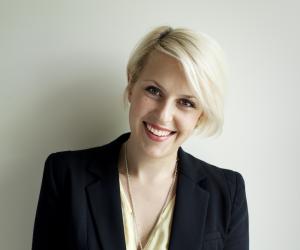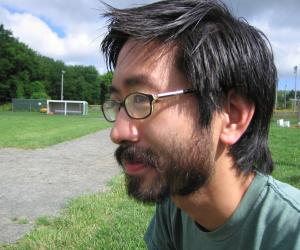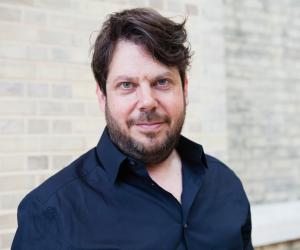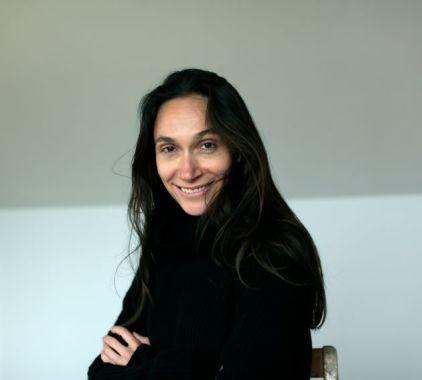
Last month’s Design Indaba offered up the usual healthy dose of inspiration we have come to expect from what is now one of the world’s leading design events; not to mention a notable force behind putting South African design on the world map and Cape Town’s selection as World Design Capital 2014.
As an Indaba novice, I was particularly interested to note the common threads and themes that emerged across various and disparate speakers, and how these act as signposts for our times. More emphasis on sound for example, is a response to the dominance of visual culture. Our eyes are tired and our ears are only too happy for some candy such as Alexander Chen’s Baroque.me interface, inspired by the “sound of a scribble”.
Sustainability once again played an important role in this year’s Indaba and here too respective themes reflect shifts in the sustainability landscape. Overall it’s becoming a more inclusive, more social, more human-centered space; and almost counter-intuitively, it’s using technology to achieve this.
Sustainability by default
The sustainability revolution has drawn many parallels with the digital revolution and it’s interesting to see just how quickly the conversation has jumped from "digital by default" to "sustainability by default".
Daan Roosegaarde is well known for creating interactive designs that explore the relationship between people, space and technology and talks to making “sustainable solutions a part of our default thinking”.
His smart highway project aims to make roads more proactive and participatory in our landscape, thereby saving energy and improving road safety. Temperature responsive road paint shows ice-crystal patterns when the temperature falls below zero to warn drivers of slippery conditions; and photo-luminescent paint allows for road markings to absorb sunlight during the day so as to release this energy at night; a glow-in-the-dark solution that is far more effective than energy intensive streetlights. The cherry on the top is a ‘green’ induction priority lane that charges your electric car as you drive.
Another project and more fun example of this thinking is Daan’s sustainable dancefloor – a massive generator that harnesses energy as we dance the night away.
Human-centered design
The notion of Human-Centered Design has grown in popularity over recent years as design emphasis has shifted from hardware to user experience.
The team from City Soft Walks spoke about using existing systems and structures in new ways. By simply observing how people interact with their environment they have successfully built more capacity and functionality into public spaces, turning sidewalk scaffolding into mini seating and meeting areas.
Daniel Charny spoke to user-centered design with the highly insightful perspective that our world that has become dominated by machine based logic, causing us to become overly focused on ‘results’. He believes that putting the person at the centre of the process makes us focus on the process, thereby emphasising the value of ‘making’ rather than outputs.
“Learning respect for the process enables imagination,” he says, and as an educator as well as a designer, Daniel impresses the fact that our education system is also over focused on results, which is problematic and restrictive. Alternatively “teaching people the way to do things rather than what to do, results in an imaginative use of skills”.
Daniels’s Fixperts social initiative is a knowledge-sharing platform that matches Fixperts (designers and engineers) with Fixpartners (anyone with a problematic boiler or a squeaky wheelchair). Fixperts apply skills and imagination to everyday problems, improving lives in the process. At the same time each "fix" is captured on film as a mini-documentary creating a library of "fixes" for sharing, learning and inspiration.
Shaping new futures
Daisy Ginsberg is a designer who looks to the future. “Design is about new possibilities, so why do we try and solve existing problems?” she asks. In order to use design to shape new futures, Daisy interrogates emerging technology and science, by asking new and different questions, quoting Einstein as her inspiration: “no problem can be solved from the same level of consciousness that created it.”
Daisy’s E. chromi project is a collaboration between designers and scientists in the new field of synthetic biology. E. chromi is essentially a new technology whereby genetically engineered bacteria secrete a variety of coloured pigments visible to the naked eye, and Daisy proposes the uses for this technology in the future are numerous and useful. For example being able to indicate the safety of drinking water (if it turns red it contains toxins), to the quality of the air (red sky in the morning, Google health warning), and ingesting a probiotic drink that will tell you whether your body contains certain diseases identifiable from the colour of your poo.
So, can design save the world?
Pecha Kucha speaker and budding designer Michael Grigoriev, asked this big meaty question: “Can design save the world?” and for Michael the answer is all about numbers.
How do we aggregate the collective intelligence in sustainability and use this to create meaning through design?
It’s an interesting question.
Leveraging the collective and existing intelligence, imagination and ideas of the above handful of speakers alone, would create significant meaningful change in the world around us.
Just imagine if we could harness the rest.
For the rest of our Design Indaba coverage please click here. It includes interviews with some of the speakers mentioned in this column.
- Y&R Strategy Director, Colwyn Elder has 17 years of experience in strategic planning, together with specific credentials in sustainability communications, social marketing, corporate social responsibility and cause-related marketing. Elder is a regular columnist for MarkLives on sustainability issues.

